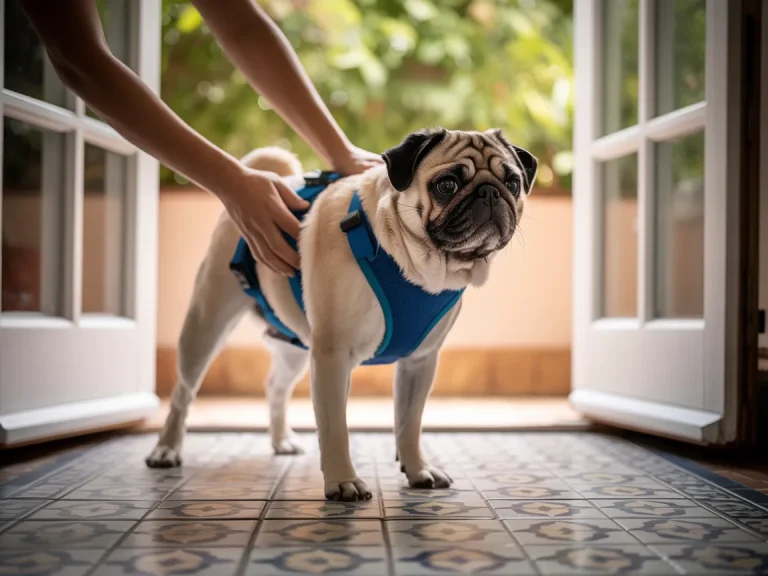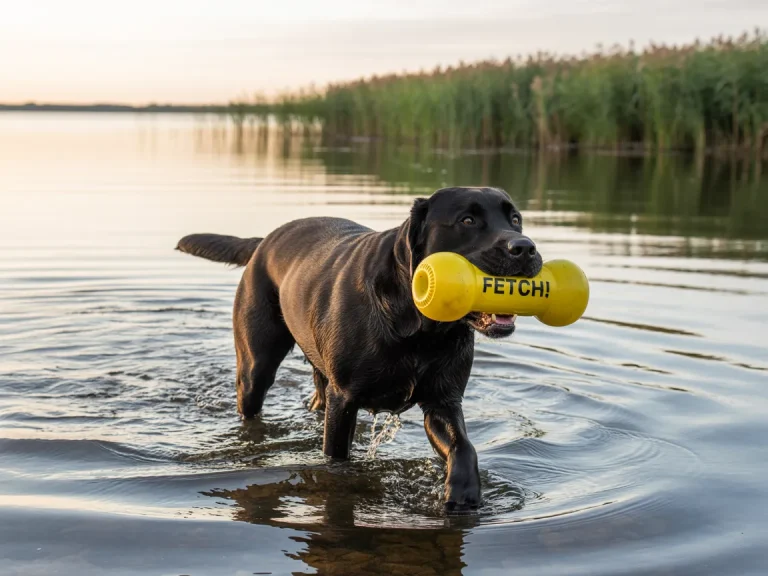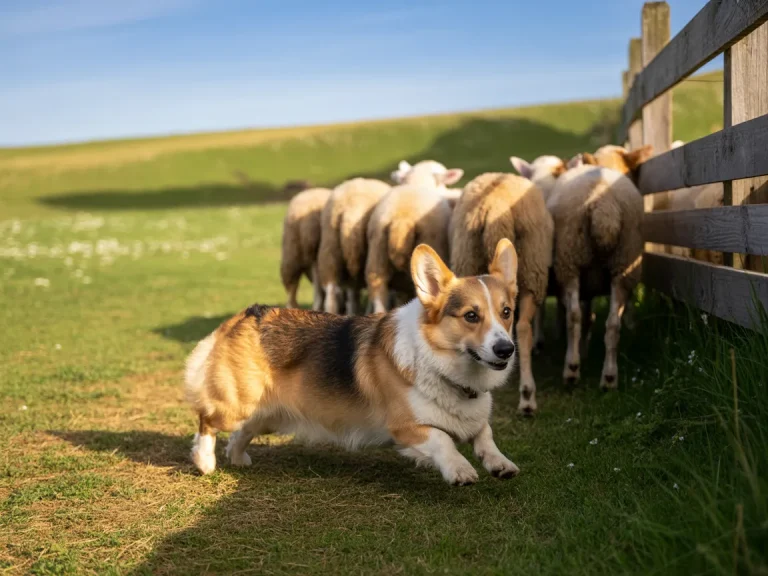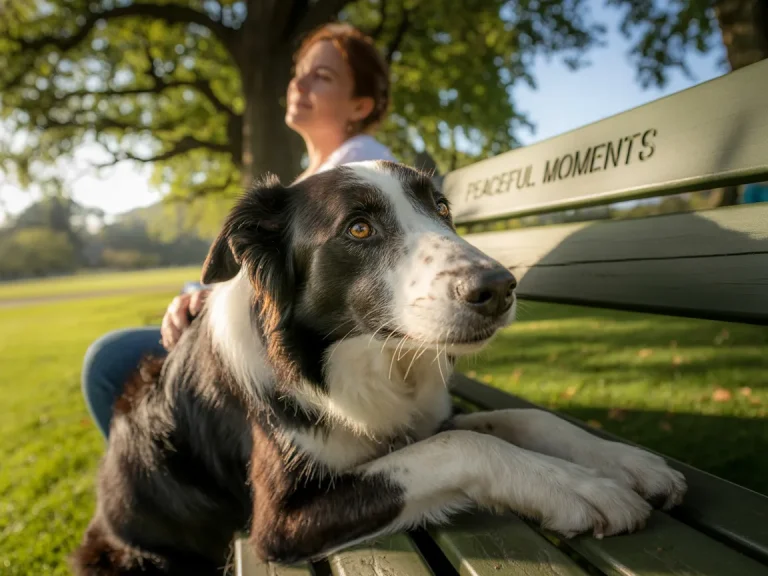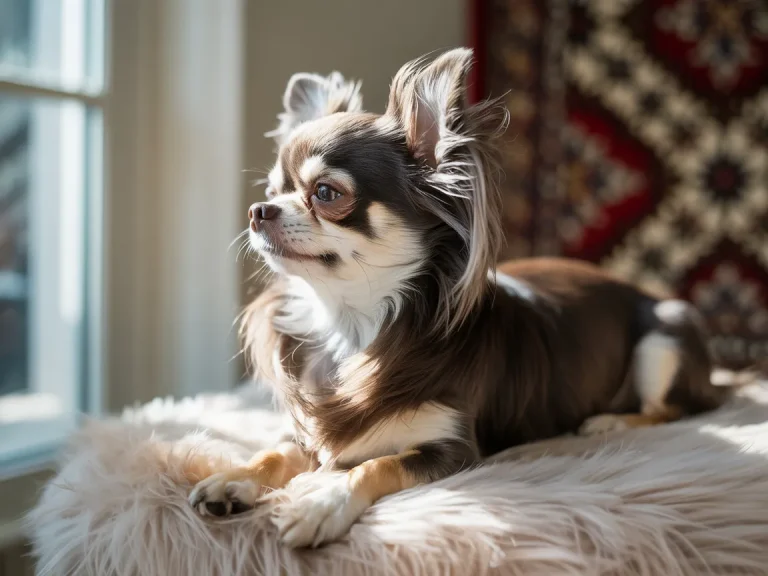Ever met a Doberman and felt like you’d stumbled on a four-legged secret agent? With their sleek, tuxedo-ready coats and eyes that light up at the hint of a command, Dobermans have a way of stealing hearts—and guarding them, too. Whether you’re waving hello to a dignified European Dobie at your front gate or dodging the playful zoomies of a young pup, these dogs reward you with loyalty that sticks around longer than your morning coffee buzz. By blending thoughtful socialization with positive, structured training, you’ll not only have an obedient companion but a best friend who truly gets you.
Understanding Doberman Temperament
Dobermans pack a surprising mix of watchful confidence and gentle devotion. Picture late-19th-century Germany, where a tax collector named Louis Dobermann needed a trusty sidekick to keep him safe on his rounds. He ended up with a breed that’s equally at ease doing guard work or snuggling on the couch. Give your pup plenty of friendly encounters early on—think neighborhood strolls, backyard barbecues, or a quick coffee shop visit—and you’ll see their natural alertness mellow into calm curiosity. And if you’ve got a rambunctious doberman boy on your hands, a steady hand from day one will help him understand that being polite wins more praise than flexing dominance.
Socialization Strategies
Start small: let your puppy sniff lamp posts on busy sidewalks before diving into the chaos of weekend dog parks. Whenever they stay cool under pressure—whether that’s a trolley rumbling by or a toddler offering wobbly pats—celebrate with an enthusiastic “Good job!” and maybe sneak in a tiny treat. Gradually mix in more people, pets, and settings: a quiet café corner, a friendly neighbor’s kitty, even the office lobby if your boss is game. It’s like giving your pup a passport stamp for every new experience, building confidence so they grow up meeting strangers with a wag, not a wary head-tilt.
I once watched a shy Dobie named Luna transform into a park superstar simply by tagging along on her mom’s morning errands. Within weeks, she was greeting joggers like old friends—proof that consistency and gentle encouragement really work wonders.

Positive Reinforcement Techniques
Punishment? That’s old news. Instead, focus on high-fives, belly-rubs, or a favorite squeaky toy when your Dobie nails a command. Variety keeps them on their toes: one day it’s a smear of peanut butter on a puzzle feeder, the next it’s a quick game of tug in the hallway. Timing is everything—reward within seconds of the right move so your dog links “sit” with the payoff. Before you know it, those cues will be as clear as your morning coffee order.
Ever tried teaching your pup that focusing on you is more rewarding than chasing squirrels? With positive reinforcement, even the most distractible Dobie learns that paying attention to you reaps the biggest rewards.
Clicker Training for Precision
A clicker is like sending your dog a text message: “You just did exactly what I wanted!” Start by clicking and immediately slipping your dog a treat until they realize that sound equals snack. Then, click at the exact moment they sit, lie down, or heel—no guesswork required. My friend Carlos used this trick to teach his Dobie, Blitz, to spin on command in under an hour. As Blitz mastered each move, he needed fewer treats and more of Carlos’s proud “That’s it!”—proof that the click itself became as satisfying as a biscuit.
Over time, you can swap out treats for hearty praise, making the click-plus-pat your dog’s new favorite combo. Before long, even casual training sessions feel like a secret handshake between best buds.
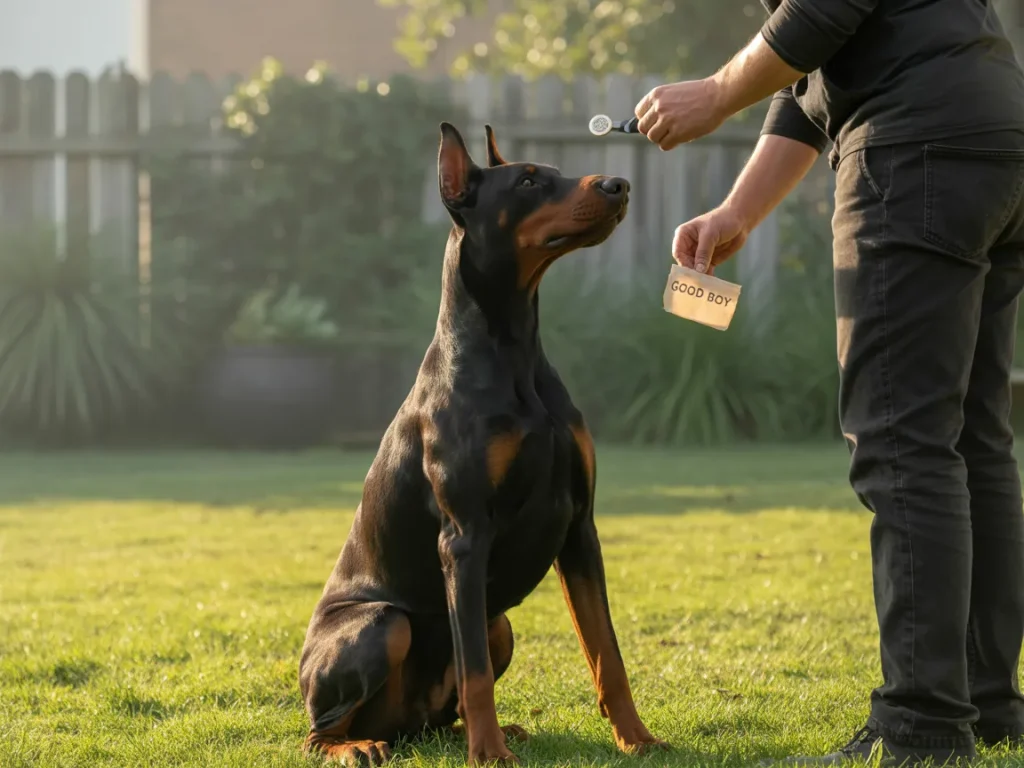
Obedience Fundamentals
Before you dive into fancy tricks, make sure your Doberman nails the basics. Think of training like a daily coffee break—for about 15 minutes, twice a day—short enough to stay fresh but long enough to learn. Start with the Big Five:
- Sit: teaches impulse control
- Stay: builds patience and focus
- Come: essential for safety off-leash
- Leave it: protects your dog from hazards
- Drop it: redirects chewing or unwanted items
Keep the setting calm at first—a quiet corner of the living room or a fenced backyard—then crank up the challenge with noises, distance, or bouncing balls. And when puppy teeth go on a chewing spree? Gently redirect those nips onto a favorite toy, rewarding the swap so your pup remembers what’s okay to gnaw.
Crate Training and Housebreaking
Think of the crate as your Dobie’s personal clubhouse—a cozy den where they feel safe. Pick a crate big enough for standing, turning, and curling up. Feed meals inside and toss in a durable chew toy to make it welcoming. Never use it for time-outs or punishment; the goal is “fun den,” not “doggy jail.” Start with just a few minutes of quiet downtime, then gradually extend the stay. Tie your pup’s bathroom breaks to meals and play sessions—after dinner or a romp, whisk them outside and praise every success. A simple cue like “kennel up” helps your pup connect the dots: crate means rest, and outside means go-time. If you’d like a play-by-play, the AKC How to Crate Train Your Dog in 9 Easy Steps walks you through each stage with photos and tips.
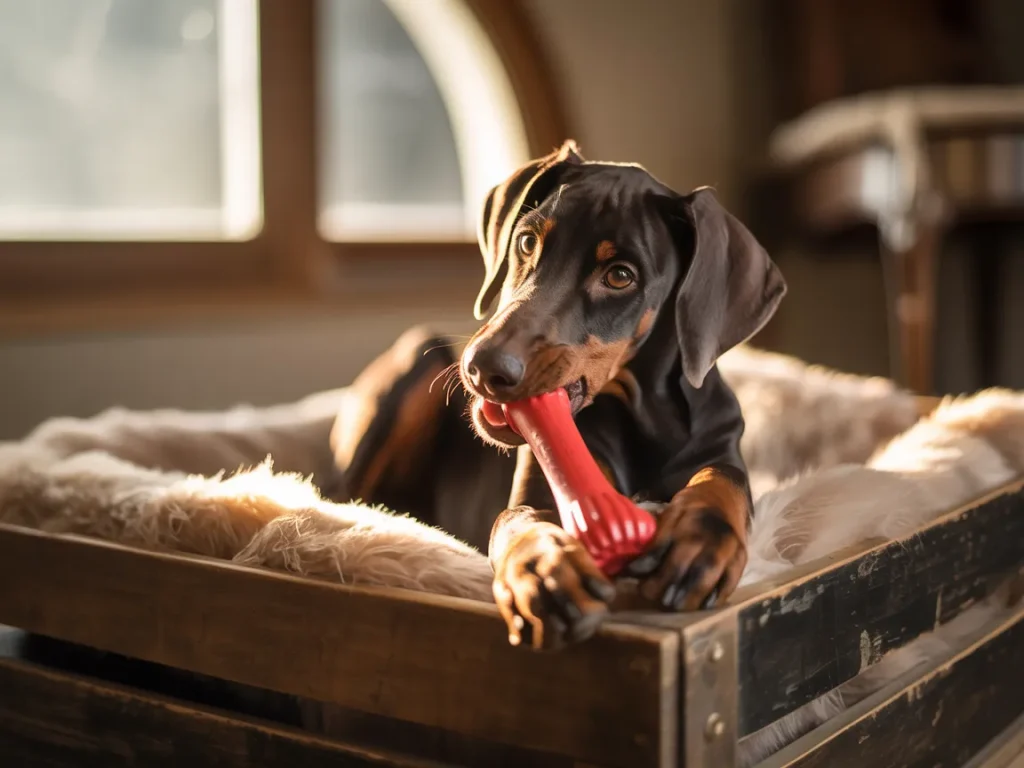
Leash Manners and Recall Mastery
Ever tried to tango in flip-flops? Teaching leash manners indoors is just as awkward—start in your hallway or living room. Click or praise the moment your Dobie’s shoulder matches your leg, then reward. It’s like choreographing a ballroom dance: one step at a time until you both flow together. Once you’re pros inside, take the show outdoors. Use high-value treats or an enthusiastic game of fetch to make “come” the best word in your dog’s vocabulary. Mix it up—whistle one day, name-call the next, even add a hand signal—so they learn to answer your call no matter what font you use. In a secure yard first, then the open world, watch your Dobie turn into a recall rock star.
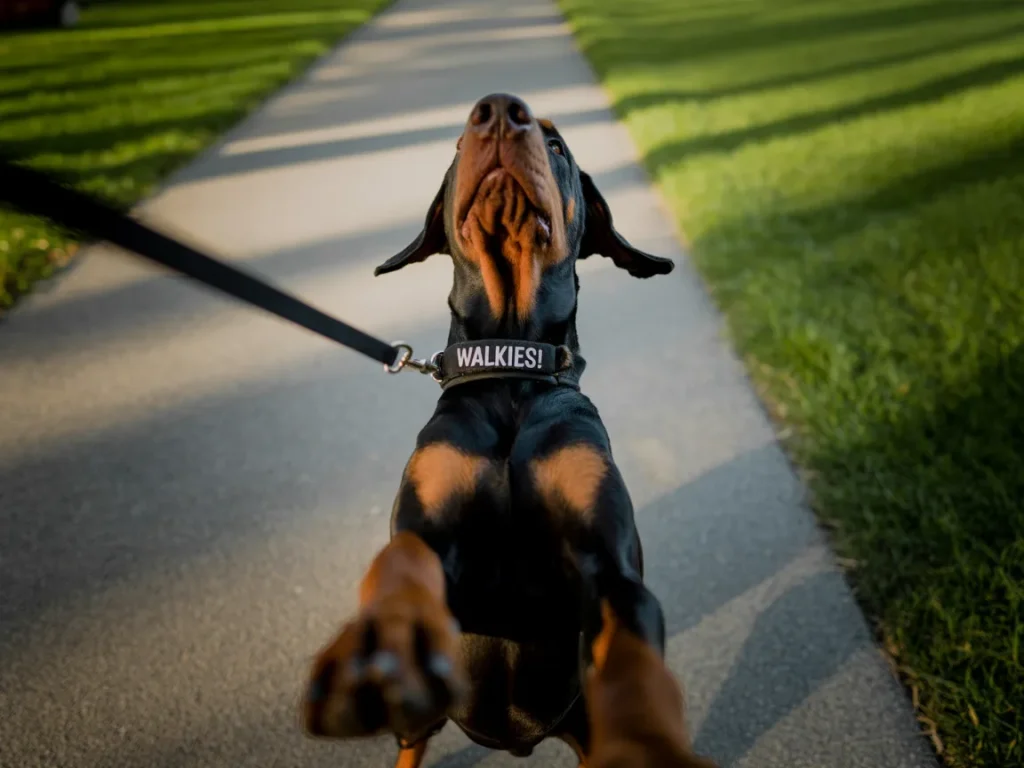
Advanced Skill Building
When the basics feel too easy, it’s time to challenge your Dobie’s brain and body. Play impulse-control games like “wait at the door” to curb that door-dash habit, or map out invisible boundaries in your yard so they learn limits without a fence. Imagine a treasure hunt: hide treats or toys around the garden and let your pup channel their inner detective. These exercises sharpen focus, burn off energy, and strengthen your bond—kind of like a puzzle that rewards both of you.
Scent and Tracking Engagement
Dobermans were bred to work with their noses just as much as their muscles. Set up home-based scent trials by dropping small smelly items—like a piece of your sock—behind shrubs or under chairs. Encourage your dog to seek them out, and celebrate each find with a cheer or a treat. It’s hide-and-seek turned pro: mental gymnastics that leave your dog proudly wagging.
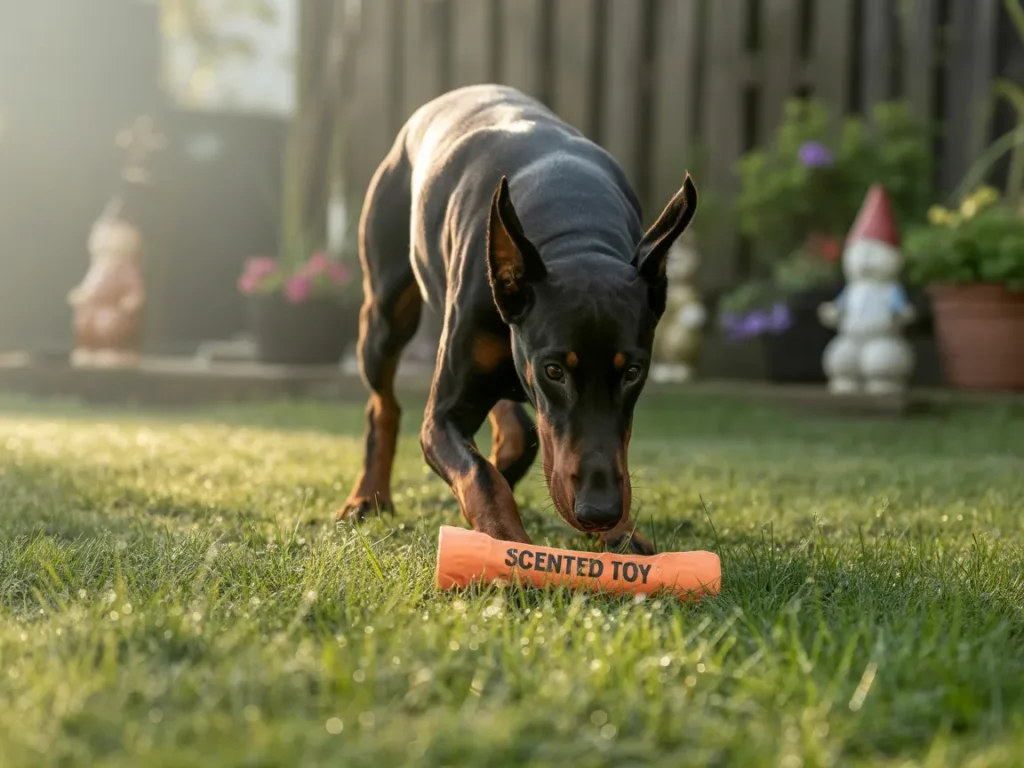
Agility and Protection Activities
If you’ve got a gym nut for a dog, agility courses are your playground. Tunnels, jumps, and weave poles turn your Dobie into a four-legged Olympian, tackling each obstacle with the grace of a ballet dancer. For those intrigued by protection work, always partner with a certified trainer—this isn’t a DIY project. Professional guidance ensures bite inhibition and safe target drills, so your Dobie’s guard instincts stay under polite control. After all, you want a loyal watchdog, not a rogue superhero.
Health, Grooming, and Maintenance
Your Doberman can’t train on an empty tank or in an itchy coat—think of them as a finely tuned athlete who needs top-notch fuel, a slick uniform, and plenty of downtime. Whether you’re helping a brown Dobie nurse achy joints or keeping a white one’s coat gleaming like satin, a balanced routine of nutrition, grooming, and rest is your ticket to a happy, well-behaved companion.
Nutrition Guidelines
Feed your Dobie like the powerhouse they are. High-quality proteins—think real chicken or beef rather than mystery meat—build muscle, while measured fats give them the energy to zoom through playtime. If your European-line pup turns its nose up at grains or has a sensitive tummy, chat with your vet about grain-free or novel-protein options. Sprinkle in joint-support supplements like glucosamine and chondroitin, plus omega-3s for that extra brain boost. Hungry for more detail? The ASPCA Dog Nutrition Tips dives into proteins, fats, supplements, and portion control to keep your Dobie in peak condition. And don’t let those lean lines sneak up on you—keep an eye on weight, adjusting portions so your dog stays fit, not fluffy.
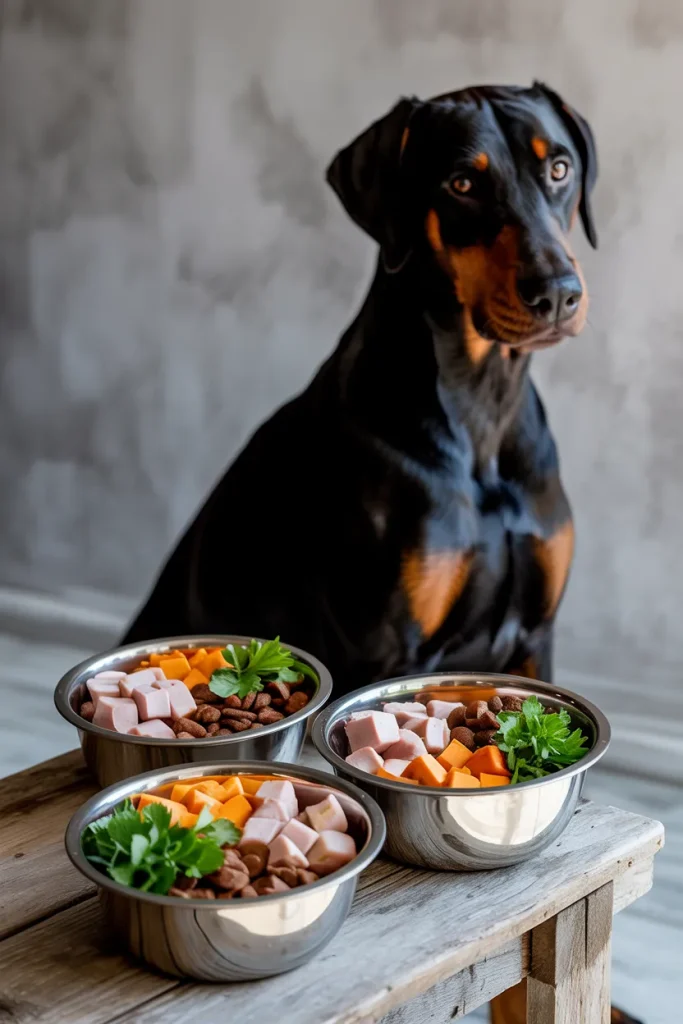
Exercise, Rest, and Enrichment
Dobermans are built for daily action—imagine sprinting alongside you on a jog, bounding through fetch sessions, then slowing down with a brain-bending puzzle feeder. Mixing high-energy workouts with calm, chew-toy time prevents your pup from feeling like a perpetual Energizer Bunny. And yes, even superheroes need naps: after a good run, create a cozy recovery corner so those muscles can rebuild and your dog can dream of tomorrow’s adventures.
Routine Dental and Coat Care
A sparkling smile and glossy coat go hand in paw. Brush your Dobie’s teeth a few times a week—think of it as polishing their pearly whites to fend off tartar villains. Once a week, give them a gentle rub-down with a rubber curry brush to whisk away loose hairs and spread natural oils that keep the coat sleek. Don’t forget ears and nails; a quick peek can catch ear infections or overgrown nails before they turn into real party crashers. A once-over for bumps and itches rounds out the health check—when in doubt, ring up your vet.
Common Training Pitfalls and Solutions
Even experienced trainers hit roadblocks. Are you swapping “sit” for “sit down” mid-session? Consistency matters—stick to one cue so your Dobie isn’t left feeling like a confused tourist. Pushing past the point of interest can turn “training time” into “nap time”; short, punchy sessions keep motivation high. And whatever you do, skip the heavy-handed corrections—your dog learns best when trust is intact. Finally, a bored Dobie is a creative one: under-stimulation can mean redecorated shoes or shredded cushions. If you’re stuck, joining a certified group class or following a proscribed online program can be the GPS that guides you back on track. For more on this topic, check out How to Find Dog Trainers and Obedience Classes.
Conclusion
Raising an obedient, devoted Doberman is a bit like crafting a masterpiece: it takes patience, the right tools, and a splash of love. Stick with consistent training, shower your dog with positive reinforcement, and keep their health and happiness front and center. Before long, you’ll have not just a well-trained pup, but a steadfast partner who lives up to the breed’s proud legacy.
Disclaimer: This article is for informational purposes only and does not constitute professional veterinary advice. Always consult a licensed veterinarian or certified dog trainer regarding the specific needs and health of your dog.
